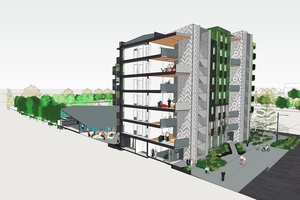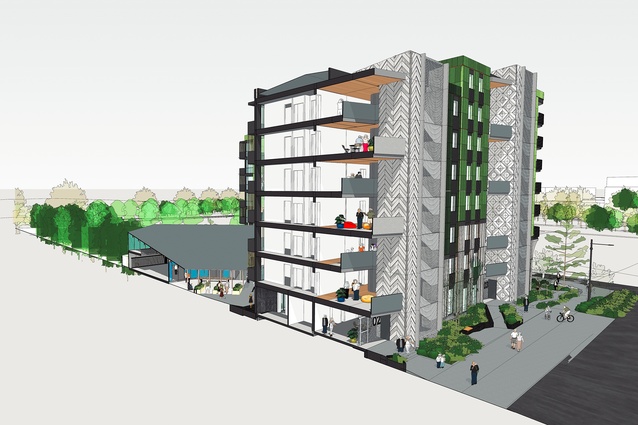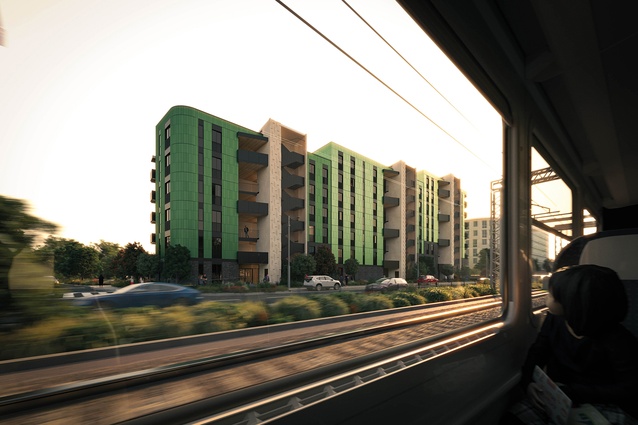Iwi-led build-to-rent
Pan-iwi organisation Te Whānau o Waipareira has embarked on a high-density, build-to-rent kaumātua housing project in Auckland’s Ōtāhuhu, designed and master-planned by Isthmus.
On the site of a former golf course, adjacent to Aotearoa’s largest hospital, Middlemore, the Hospital Road Apartments will provide homes for kaumātua, kuia and whānau with disabilities.

“In developing this housing, Te Whānau o Waipareira aims to provide affordable rental housing with easy access to community, cultural and healthcare facilities,” says project lead Andrew Mirams. “Included in the design are a whare manaaki (inclusive community space) designed by TOA Architects, communal gardens and an early childhood education centre.”
Facilitated by the Ministry of Housing and Urban Development’s Housing programme, the 124-apartment project is arranged across two buildings, the larger of which rises from six to eight stories along the Hospital Road boundary. “Vertical circulation cores representing the trunks of the rākau rangatira rise from Papatūānuku and the building base,” says Mirams, “creating spaces for community gathering.” Visually, these cores modulate the bulk of the building, opening to the street and the shared backyard.
Eight different apartment types (of one-, two- and three-bedroom layouts) provide Lifemark Level 4 accessible vertical living for kaumātua and intergenerational living. At ground level, the lobbies function as laneways between the public street and the shared backyard and, at level one of the vertical circulation, generous communal spaces open to balconies, creating a ‘front porch’ for residents to connect and interact.
Indigenous plants and fruiting trees will provide a shared food source for residents and for the manu that chart the seasons, and a high percentage of permeable surface has been achieved with planting, lawns and pathways. A fern and rock garden within the south-facing building’s undercroft will offer a sheltered off-street gathering place when the whare manaaki and ātea are being used for pōwhiri and other occasions. The project is expected to be complete by late 2026.












